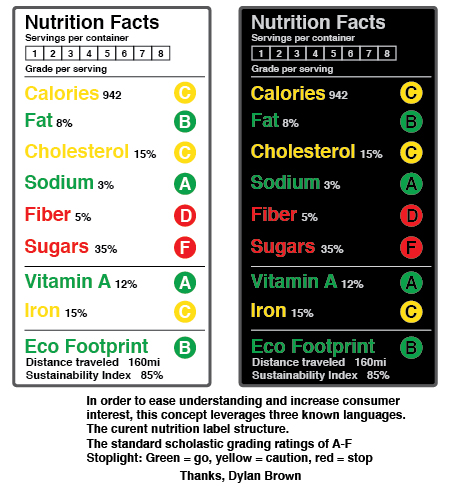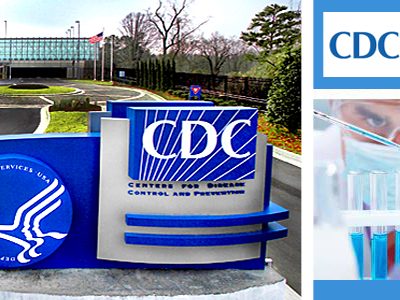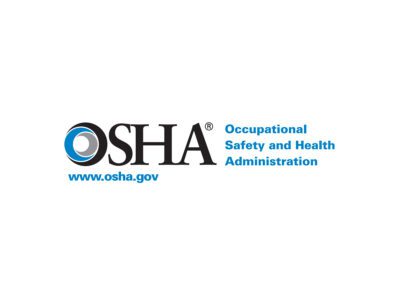Eco-Nutrition Labels
Increasingly, consumers want to know where their food comes from, how it is produced, and what impact their choices are having on the environment. The standard “Nutrition Facts” label provides information on ingredients and calories, but says nothing about where a food came from, nor the energy and natural resources expended in its production. Is it time for an “eco-nutrition label” that provides information on both nutrients as well as the environmental impacts of production?
Rethink the Food Label is a project by the UC Berkeley Graduate School of Journalism’s News21 program and Good Magazine, which asked the public to submit designs for a new Nutrition Facts Label. The goal was to make the FDA Nutrition Facts label more useful to people who want to consume healthier, more nutritious food. Designs could incorporate the label’s existing contents, or they could re-invent the label to include new information such as a food’s carbon footprint, water use, overall energy use, and geography, among other characteristics.
Rethink the Food Label’s third-place design provided information on a food’s “Eco Footprint,” stating how many miles the food had traveled and giving an overall “sustainability index” score.

Eco-labeling certainly provides benefits that overlap with those of the standard nutrition label: both serve the purpose of promoting human health and wellness. Yet, a label that contains environmental information invokes the jurisdiction and expertise of the EPA, as well as the FDA and possibly the USDA (which currently administers the “certified organic” program).
This begs the question, how would such an eco-label program be administered? Is a comprehensive federal “eco-labeling” program feasible, and how can this best move-forward? A public-private partnership is one possibility, such as Canada’s partnership with EcoLogo. Yet ultimately, a successful program needs to be standardized and utilize science-based metrics for measuring sustainability, carbon emissions, and other factors. The FDA and EPA seem best equipped to provide this level of standardization and oversight.
Of course, eco-labels would not have to be included on the standard FDA “nutrition facts” label; they could be administered independently and stand alone on food and other consumer products, such as textiles. One model for a free-standing approach to eco-labeling is the ENERGY STAR program, jointly administered by EPA and the U.S. Department of Energy.
While there may be no such thing as a perfect labeling system, in our information age an eco-label is certainly feasible and would empower consumers to act more deliberately. Berkeley and UCLA have written about the environmental and climate impacts from industrial agricultural practices, as part of our Workshops on Climate Change and Business. Given what we know about the environmental and health impacts of agriculture and food production, the time appears ripe for a critical look at how to revise or expand upon the traditional food label to include environmental impact information.







One Reply to “Eco-Nutrition Labels”
Comments are closed.